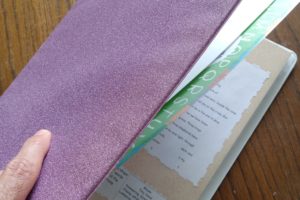We are well into May and for most homeschoolers the end of the school year is probably in sight. As the weather warms and outdoor activities become more pleasant, the daily task of homeschooling may become a struggle with some active children or more of a struggle, if it always was in the first place! How can you get the most out of your everyday learning goals as you near the “end” of school year? (By the way, I put “end” in quotation marks because you don’t necessarily need to stop learning at all through the summer. Do you remember the mother I mentioned a while back who carries on right through? What a trouper.) But the point is that if your family normally practises a slowdown and break from school work around this time of the year, then you should ensure it is well deserved and not harmful to the learning culture in your home.
I would like to offer a few thoughts and suggestions that might be helpful. But more than this, we would like to invite you to enter the conversation and share any suggestions you have found helpful on our Tree of Life blog.
1. Make the time count. In my experience as a student in school years ago, I can remember some classes where the last five or ten minutes of every period were simply a write-off. Nothing would get done because everyone was “packing up”. In other classes, the teacher would use every last moment and expect productive thinking to continue. The same kind of thing happens with days and weeks. Effort can drop and time spent can be whittled away to the point that little is accomplished, even for the time invested. The goal should be to use whatever time is left to its maximum potential. Having solidly developed routines will help a great deal here. If you expect any progress to be a battle with your children then there may be character issues that are more important than the schoolwork.
2. Set reasonable goals. For younger children, the cycle of reading and work usually comes in shorter amounts, and there are more frequent stopping points. It is best to finish what you start, as long as it doesn’t become a burden to the student. It may be that a high school student simply won’t be able to finish working through a long science course, but maybe they can finish two more chapters. Then do that – well.
By the way… at Tree of Life, we often get asked if students can continue their high school courses through the summer by sending in assignments for evaluation. Absolutely – our evaluators are available for any submitted work through the summer. The volume is usually slower but there always seems to be students working away – and that’s fine.
3. Don’t forget nature opportunities! Exploring and learning about gardening, insects, tadpoles, wildflowers, etc. is obviously well suited for the season of spring. And it gets children outdoors. This is a good way to continue learning. Just remember to use an appropriate amount of structure, depending on your goals and the age of the children. If there isn’t an intense natural curiousity in the child or if there’s a tendency to become bored of something quickly, you might need to organize the learning, give purpose, pace the exploration, develop skills, or increase depth. And if students are too old for nature activities like this, perhaps they can simply enjoy the sun while they do math on the lawn!
4. Review the year of homeschool. Give opportunities to look back over all that has been accomplished. Creating displays, compiling work, or organizing and sorting stuff to keep or discard can be opportunities for students to reflect on how far they’ve come. And this kind of activity also has the practical purpose of cleaning up – not bad.
Okay…if you still have some way to go with homeschool this year, take a deep breath! You are doing well if you’ve gotten this far!
We would be interested to hear how you manage the approach to the end of the homeschool year. Whether you homeschool younger children, high school students, or a whole mix, please leave a comment below to share your suggestions, experience, or questions.




